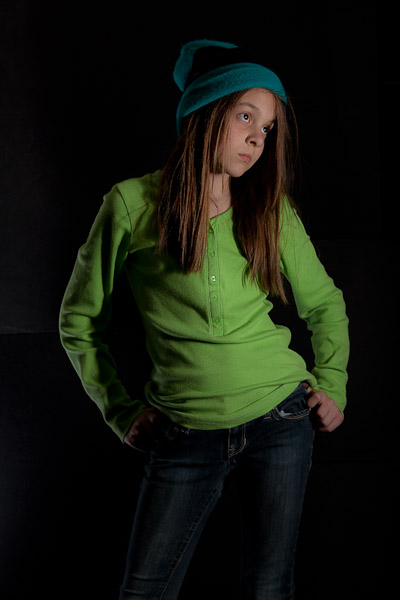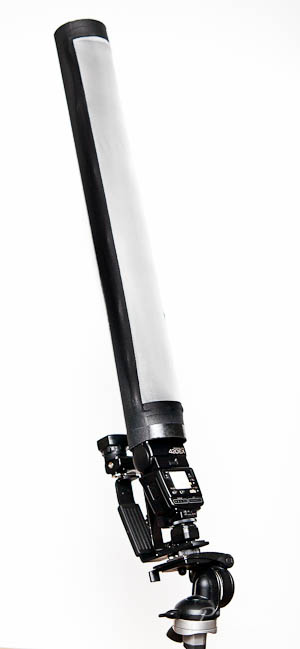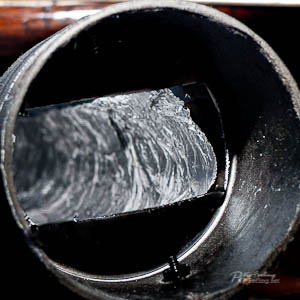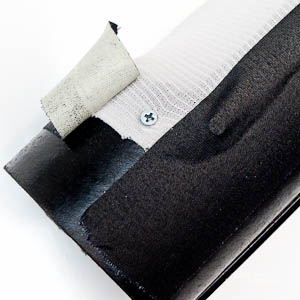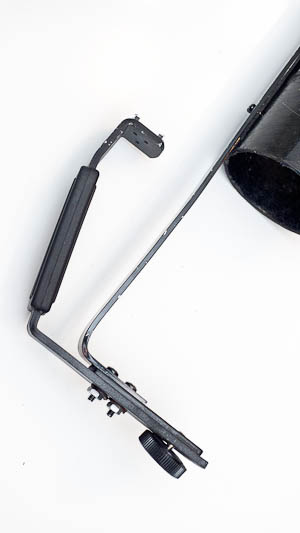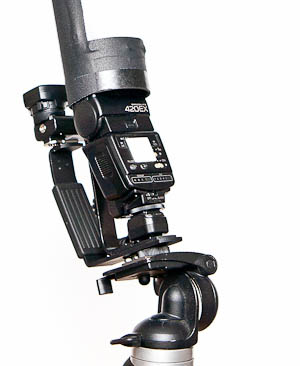
Pages |
Home |
| The "Sabre Tooth" Strip Light. |
|
Usage. When fitted with a silk screen, it's becomes a diffuse light source with short range and fall off. Construction. This particular design I have allows for portability with the use of speedlights. While examining other designs, I wasn't impressed with the use of PVC pipe, screw on end caps and other heavy hardware. The lighter the design, the less support required to handle it. Another concern was that some designs required enclosing the flash into the device, making access to controls difficult, and worse, subjecting the flash to undue heat. A better design was needed and this is it. Basically, it's a 3 inch cardboard shipping tube with plastic end caps, the kind that push in and sit flush with the edge. A small two inch window cut along one side. The upper cap, including the tubes interior was painted white, and then lined with tin foil to increase reflectance. A small, rectangular window was cut into the lower cap from which the tip of the flash gun fits into. Which is recessed well into the bottom of the tube to shield spill. A white medical grade compression stocking is then carefully pulled over the tube. Screws are placed every four inches along the edge of the window to anchor the material. The stocking is then cut outside the screws and black gaffers tape is run over the seam. A 3/4" wide by 1/8" thick piece of aluminum flat stock runs the entire backside for support, and is bent and bolted to a flash gun handle. The speedlight is attached to the camera screw and floats into the bottom of the tube. The weight of the device is supported by the flat stock. The design allows for the flash to air cool, have easy access to its controls, including clearance for a TTL extension cable (from which I attach a radio trigger. Which is parked onto the shoe mount on top of the flash gun handle), and the use of Quantum battery pack cables. Note: I use TTL extension cables on all my flashes to allow me to place radio triggers in line of site for better communication, or to change out defective units or batteries without disturbing the light, and to hook directly to the camera in a pinch. The design is incredibly light, can be handheld or easily accommodated by light tripods (a manfrotto 190XDB is used here). I felt that a heavier device would need more support, and that meant lugging something more larger and beefy, like a Calumet 004b. Which kinda defeats the purpose of portability. Might as well haul out a generator and flash packs. Application. As said before a strip light provides the means to project a narrow beam of light in ways that support torso or full body shots. The light from this unit, like a softbox is very diffuse, and can be used very close to background without spill. The example below demonstrates the use of strip light on camera right, and an umbrella camera left. The right side of the model is very soft, and left has a hard edge, including spill on the background. The strip light also lights her entire side evenly, and the umbrella has a hot spot with vertical fall-off. While none of these traits are a negative, it's nice to have a device that can prevent or accommodate these kind of features if so desired.
Moving the strip light more front and closer to the camera axis provides a full body, single lighting solution.
It would be beneficial to have a second strip light for use on both sides. Time to make another one. I will update this page with additional examples, and uses. -Keep shooting.
|
|





